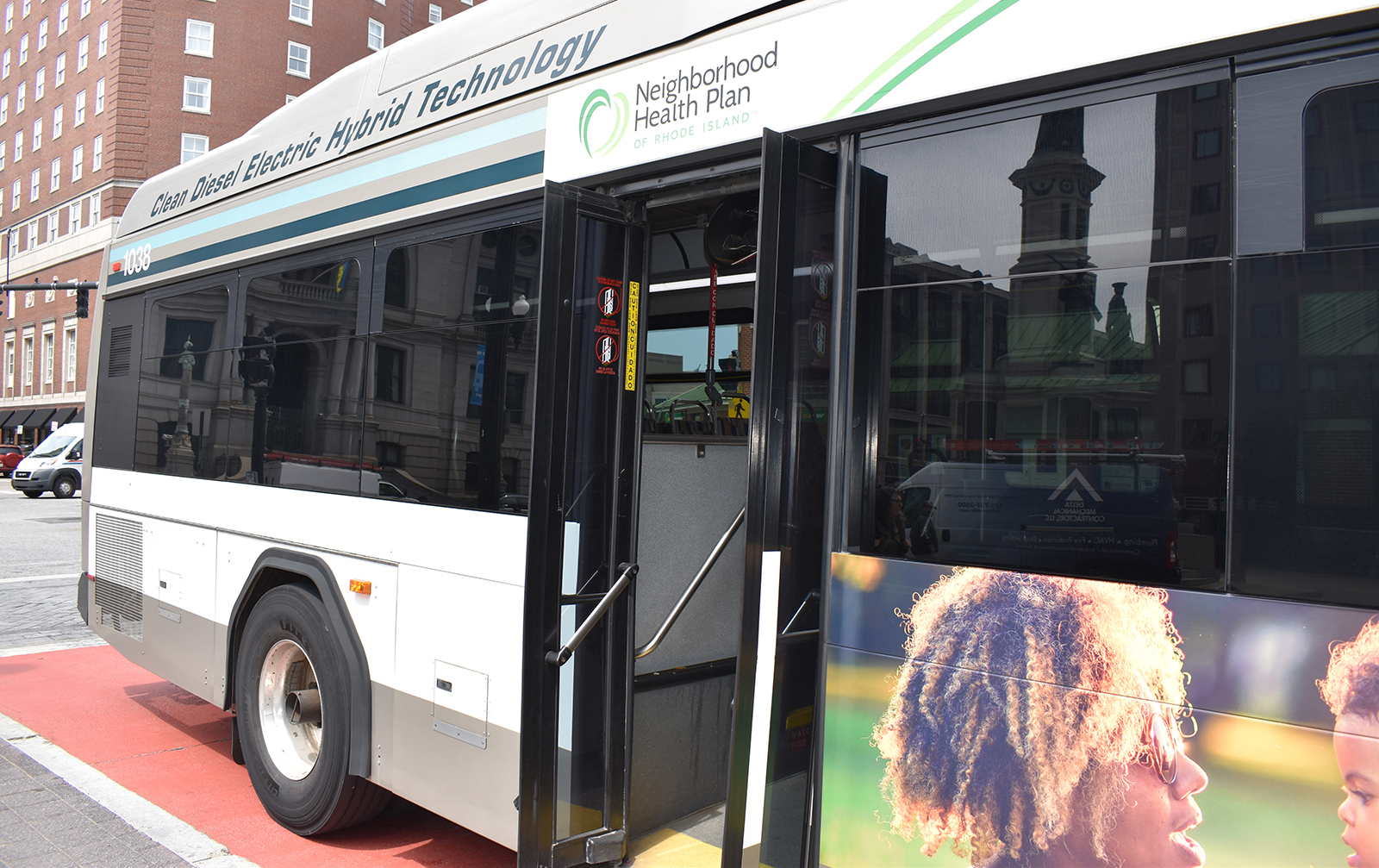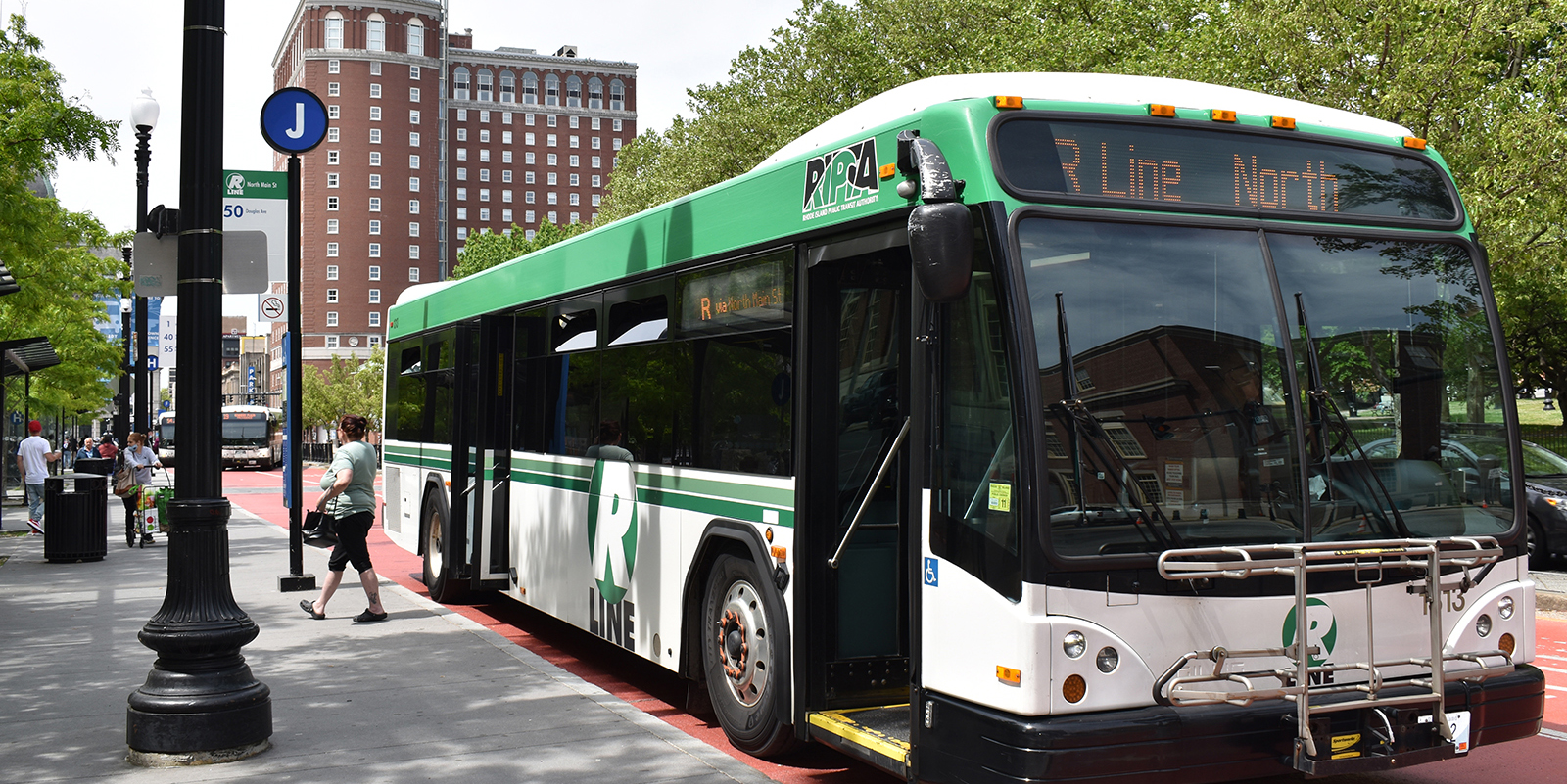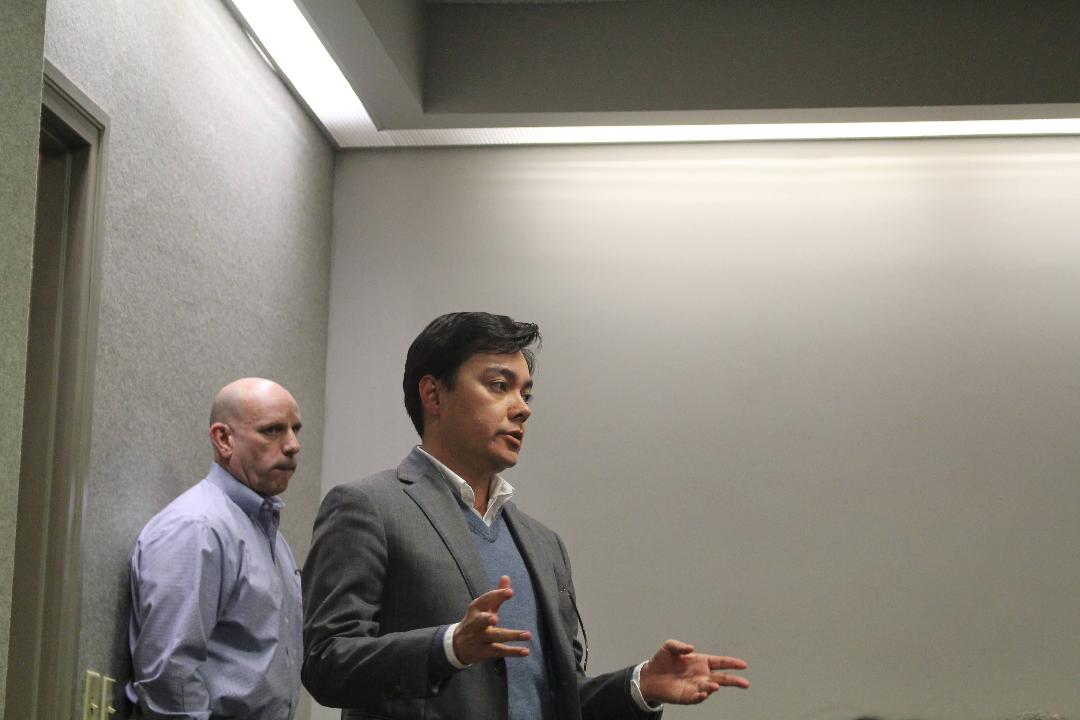Amtrak Bypass Still Something to Worry About? Depends Whom You Ask
January 15, 2022
CHARLESTOWN, R.I. — A U.S. Department of Transportation “Providence to New Haven Capacity Planning Study” has some local officials wondering whether the original plan to run train tracks through sections of their town, and other Rhode Island and Connecticut towns, might not be dead after all.
The study is part of the Northeast Corridor 2035 Plan, or “C35,” a 15-year plan to guide investment in rail service in the Northeast.
The C35 describes the plan, which has an estimated cost of $130 billion, as the first phase of the long-term vision for the corridor described in the Federal Railroad Administration’s 2017 NEC Future plan, which includes “making significant improvements to NEC rail service for both existing and new riders, on both commuter rail systems and Amtrak.”
In 2016, Charlestown officials learned, by chance, that the Federal Railroad Administration (FRA) had released its Tier 1 environmental impact statement (EIS) on a plan to straighten train tracks in the Northeast to accommodate high-speed rail service. The plan wasn’t met with broad enthusiasm.
The FRA had sent letters to affected towns and the Narragansett Indian Tribe in 2015, soliciting comments on the draft EIS, but according to a blog post on the plan by the Charlestown Citizens Alliance political action committee, there was no specific mention of new tracks going through Charlestown or other neighboring towns.
“Most of these governments have no recollection of receiving communication from the FRA,” the post read. “The letter does not say that new rails and a new rail route are proposed in your community. When no comments came from one of the most impacted towns, this should have suggested to the FRA that the local community and local stakeholders were not aware and engaged in the review process.”
The unpleasant surprise included in the plan was the Old Saybrook to Kenyon Bypass, which would have moved rail traffic directly through Old Saybrook, Conn., Westerly and Charlestown, bisecting neighborhoods, nature preserves and historic farms. The towns and Narragansett Indian Tribal officials fought the plan, and the Record of Decision, released in 2017, omitted the bypass.
But the omission didn’t mean the bypass had simply gone away, and the Charlestown Citizens Alliance warned that the decision left the door open to a study which could resurrect the bypass.
The alliance’s blog post published after the decision reads: “The July 12, 2017 ROD calls for a study that could possibly bring back the Bypass. We will remain vigilant throughout this study process to work to stop the Bypass from being resurrected.”
In an effort to learn more about the FRA’s intentions, Town Council President Deborah Carney spoke last August with Amtrak’s chief executive officer, William J. Flynn, who said the most likely route for a New Haven to Providence high-speed rail track would be along the Interstate 95 corridor.
Carney, who said she had been put in contact with Flynn by a mutual acquaintance in Charlestown, acknowledged that while there is no guarantee that plans for the original bypass that would have bisected the town would not be revived, she felt reassured that the I-95 route would be preferred.
“They’re doing the feasibility study and analysis, so there’s no concrete plan at all, but [Flynn] said if they were to go forward with something, it would most likely either to parallel Route 95, like the northern part of the state, or it would involve improving the existing line that goes along the southern coast – where it is now.”
Rhode Island Department of Transportation (DOT) director Peter Alviti represents the state on the 18-member FRA Northeast Corridor Commission (NECC), which is studying rail demand and capacity in the Northeast New Haven to Providence rail corridor.
Alviti, and DOT intermodal programs chief Stephen Devine, met in November with Charlestown officials, Rep. Blake Filippi, R-New Shoreham, and Sen. Elaine Morgan, R-Hopkinton.
Alviti told the group the NECC would require a study of future ridership demand on the New Haven to Providence route before any decision was made. (DOT did not support the originally proposed Old Saybrook to Kenyon bypass.)
DOT spokesperson Charles St. Martin said in a recent emailed statement that his agency was counting on more public consultation this time around.
“Yes, RIDOT met recently with Charlestown officials regarding this proposal,” he said. “We told them we are aware that Amtrak is retaining a consultant to do an initial market study only to first determine the demand for higher speed services. This effort will be starting soon and will include a robust public participation component.”
St. Martin also noted, “Rhode Island’s position remains the same as in 2017, when the state indicated opposition of the bypass route in Charlestown.”
What still vexes some Charlestown officials, however, is the continued lack of any FRA response to the town’s inquiries.
In August 2021, at the request of the Town Council, town administrator Mark Stankiewicz wrote a letter to FRA interim administrator Amit Bose, asking for more information regarding the New Haven to Providence study.
After receiving no response to the first letter, Stankiewicz sent a second letter on Dec. 10, which read, in part, “Given the limited available information and the absence of any communication from the FRA, we are in a quandary as to how to ensure Charlestown receives timely information and is able to relay our input and concerns about the New Haven to Providence Capacity Planning Study.”
Charlestown Planning Commission chair Ruth Platner, who was not mollified by Flynn’s statements, said she had not expected the FRA to respond.
“I’m not surprised that they’re not answering, but I think it’s important that the town is asking,” she said. “The thing is, they took the [Old Saybrook to Kenyon] bypass out of the decision, but they didn’t replace it with anything, and the whole rail plan is based on the assumption that there’s going to be huge job growth in the big cities — in Washington, Philadelphia New York and Boston, but that’s not Rhode Island and that’s not Connecticut. The high-speed rail is to connect those big cities, and they want to do it, one way or another.”
Platner said she believed that pandemic-related changes which have made it possible for many Americans to move out of large cities and work from home will impact the study.
“I think what’s happened now, because of the pandemic, there’s kind of a wait and see, to see what this means for growth. Are the cities not going to grow?” she said.
Another factor to consider, Platner said, is the proximity of the I-95 corridor to the coast, and therefore, its vulnerability to rising sea levels.
“It’s a beautiful ride, and it’s right along the coast, and the water is right there. The tracks are going to be under water, so they have to do something, and the problem has to be solved, and it’s going to be solved with some sort of realignment away from the coast,” she said.
Carney said her concerns had been largely put to rest after her conversation with Flynn and the meeting with Alviti.
“In our conversations with Peter Alviti, and also William Flynn, it doesn’t seem as though that Old Saybrook to Kenyon is going to be revived, but I understand where people are coming from,” she said. “You know, if it’s their property that’s impacted, obviously they’re concerned about it, but I will say that Director Alviti kind of put our minds at ease, you know, in saying ‘This is not in the 10-year plan.’”
Platner, however, warned the affected towns to remain vigilant.
“The town of Charlestown needs to be involved, so that we can protect the people and the environment here,” she said. “What we don’t want is to have a plan be created that we don’t know about.”
The FRA did not respond to several requests for comment.




I have several questions. Did the Federal Railroad Administration meet with town officials or correspond with them in any way since 2017? Why is a conversation with Mr. Flynn being used as gospel when Mr. Flynn is not part of FRA’s planning process and has little control over the decisions made by FRA? Has Senator Reed been involved in the conversation? I believe he has contol of the USDOT apporpriations in the Senate. Is there a plan to quickly mobilize affected residents and other groups to coordinate a response to any change in the FRA plans for southern Rhode Island? Why is CCA the only group warning the town to stay vigilant when the town council chair is nonchalant about the FRA’s plans?
The FRA had wide notice of its study of the rail corridor, perhaps the people complaining about not noticing didn’t bother to pay attention because they were not interested in rail travel. But RI’s position on the northeast rail corridor is one of our geographic assets, and improving the corridor is in our overall interest for environmental reasons too. While the biggest problem with sea level rise and curve straightening is in CT and not needed so much in RI, the vociferous opposition to using even a small amount of land for a two track right of way shows the difficulty of getting anything done. Those in "North Atlantic Rail" who envision an entirely new rail line between Providence and Hartford should take note, NIMBY opposition on every town en route will be overwhelming and fierce.
It was not a small amount of land! My community of Charlestown, Rhode Island, contains the Kenyon end of the Bypass, and the Federal Railway Administration planned less than five years ago to bisect Charlestown with new high-speed tracks that would have run from Charlestown’s western edge to its eastern edge—through the Burlingame State Wildlife Management Area; through other state and private open space and homes in Burdickville village; across farms, including a four-generation farm-to-table operation on top of Schumankanuc Hill; over Native American tribal land; through the center of the 1,112-acre Carter Preserve (owned by The Nature Conservancy); through the middle of the Revolutionary-era Amos Green Farm and adjacent properties protected by conservation easements; through federally funded Historic Columbia Heights housing; and then over Historic Kenyon— to reconnect with the existing railroad near the eastern edge of town in the Great Swamp State Wildlife Management Area. In addition, the Bypass would have crossed the National Wild and Scenic Pawcatuck River several times and was entirely within the areas of the US Fish and Wildlife Great Thicket National Wildlife Refuge and the Wood-Pawcatuck Sole Source Aquifer. The impacts that were proposed were extreme. I do take the train occasionally from Kingston to NYC. I like train travel, but the high speed Acela is for a more affluent rider than me. Nearly every environmental group in the state opposed the Bypass, so it was not simply NIMBY opposition. And yes it will be hard to site rail realignment as long as the proposals include such extreme destruction.
More NIMBY BS from annoying boombers getting in the way of progress… how refreshing.
A house for some is an investment, for others like my family it’s a home. We built our home 20 years ago and over those 20 years lots of hard work getting it to where we want it to be with beautiful landscape and few amenities. This home is where we raised our family and have built many memories. We love our home, became part of our home and enjoy the peaceful community we live in.
This rail plan crashes right over our home we worked so hard to build and maintain. It’s like a dark cloud adding lots of stress and wondering should we continue to invest in our property. We will be nearing retirement in this coming decade and hoping that the hard work has paid off. With the decline in homes being built in Charlestown, it will be impossible to duplicate what we have grown into especially nearing the end of our mortgage payments.
Many folks believe in progress but we like others in the town of Charlestown think this progress is wasteful unnecessary destruction into our lives and beautiful surroundings.
We will continue to fight the fight and applaud other for their efforts to bypass the bypass!
Sincerely,
Andy Llaguno – home owner
I agree we can not allow this for all of the environmental reasons stated by Ruth, and the homeowner… But beyond that…It seems to me the whole crux of improving the speed of train travel was for the business community DC- NY- BOS, etc…. I seriously wonder if at this point its even necessary, now that so many businesses have learned to “go remote” for long distance work and meetings. If/ when train, and tracks need upgrading, they should use a system like the monorails at Disney parks which allow for unobstructed movement beneath the tracks. This way, some of the environmental impacts could be minimized.